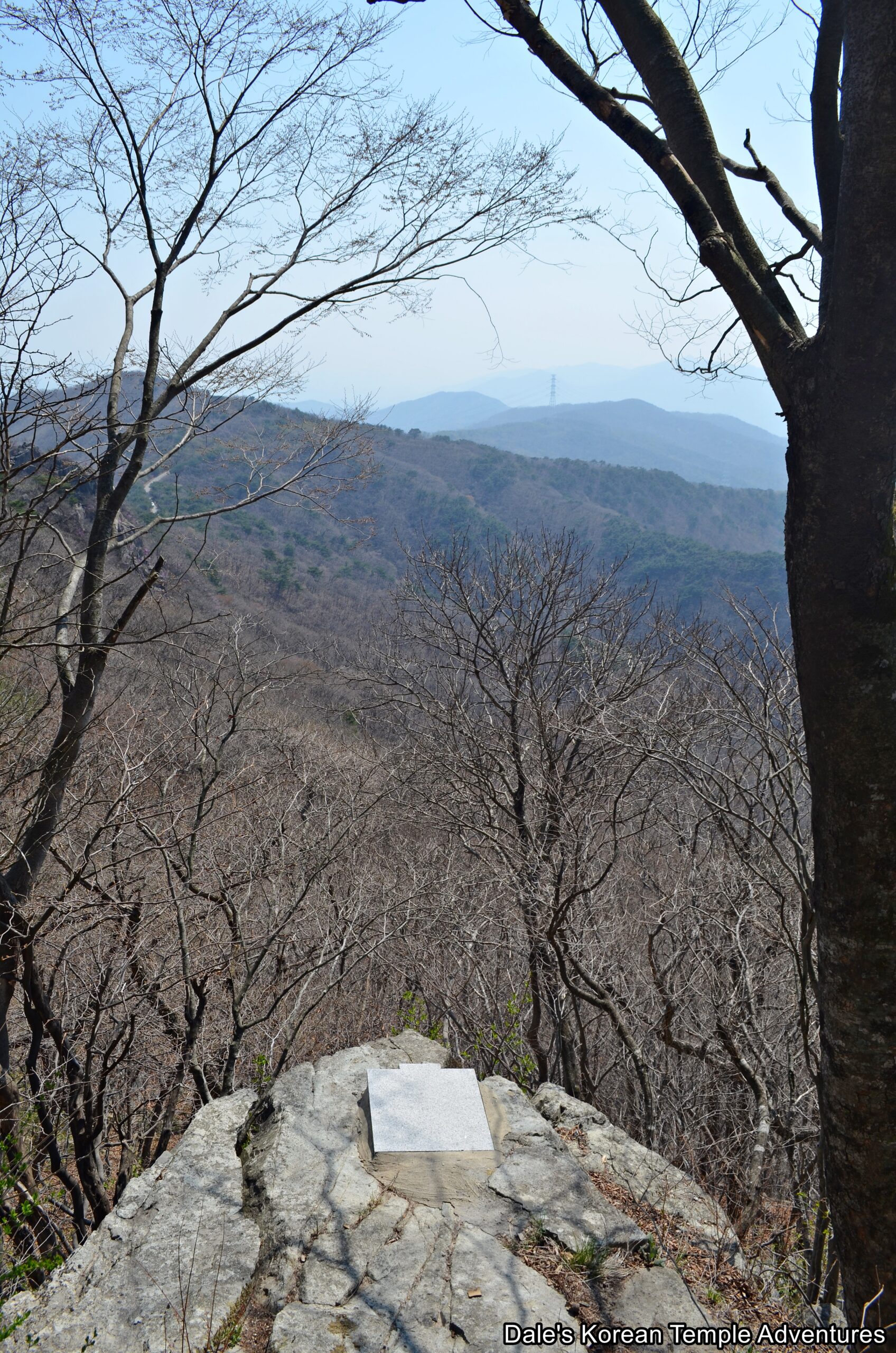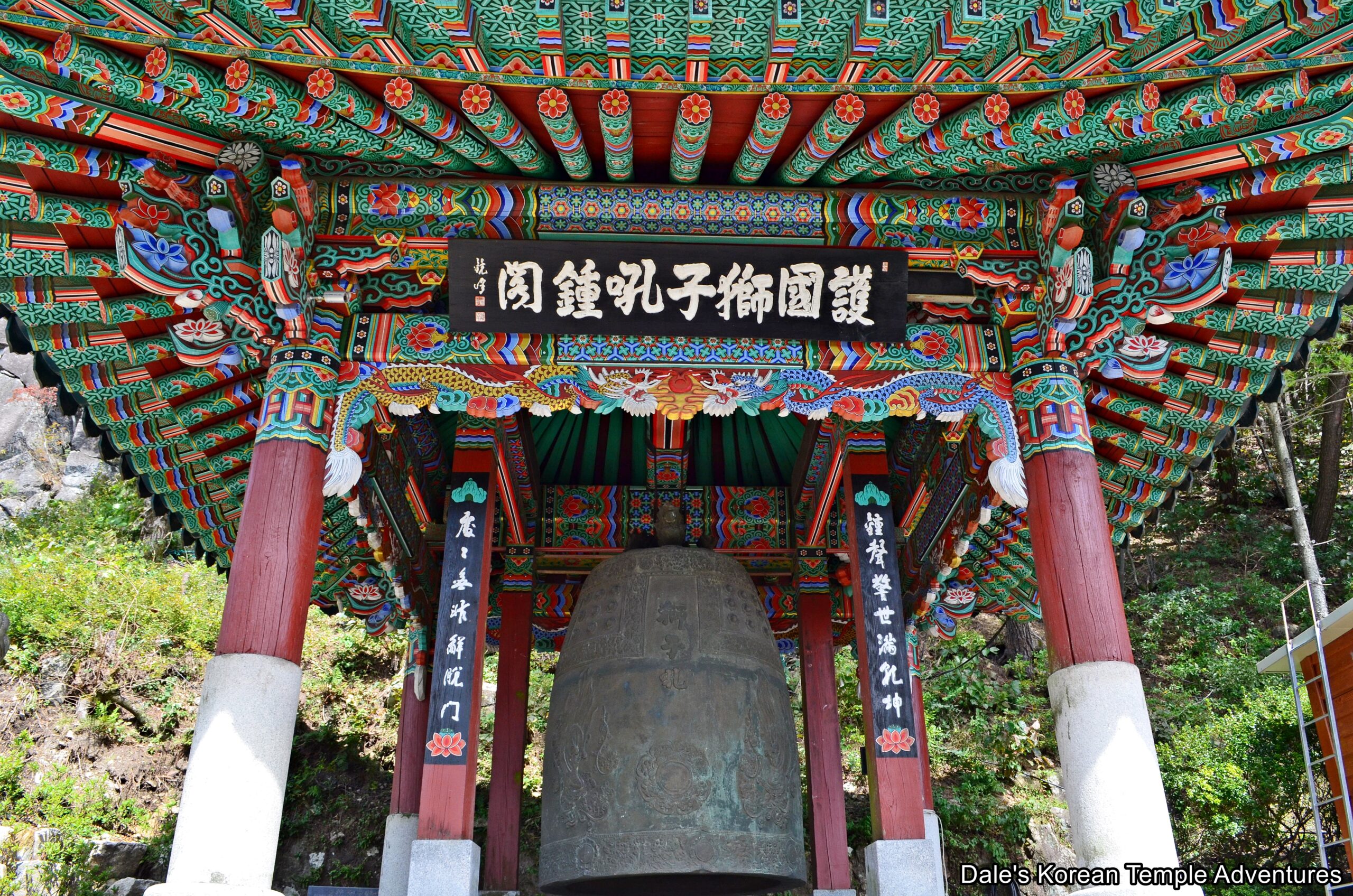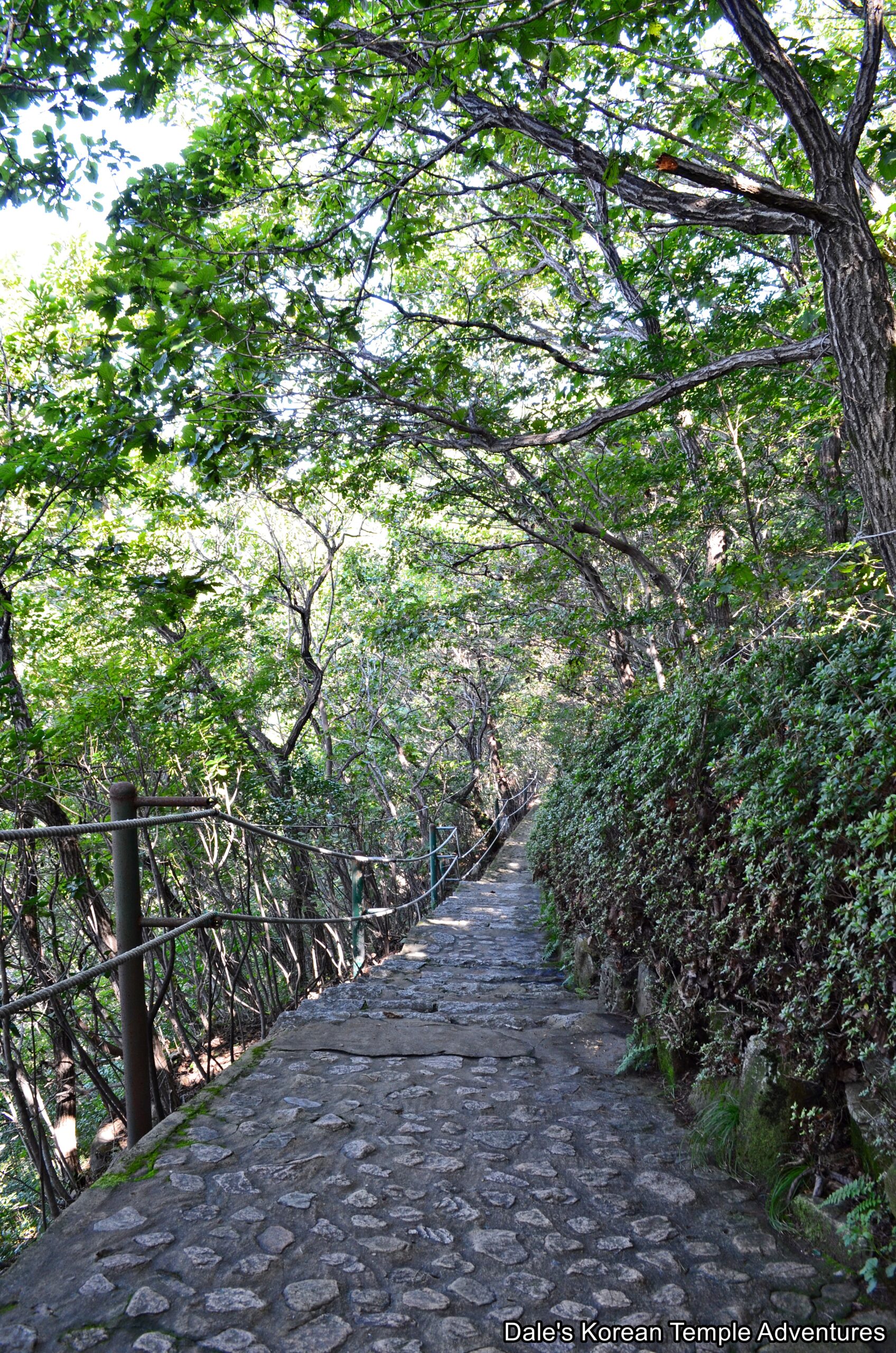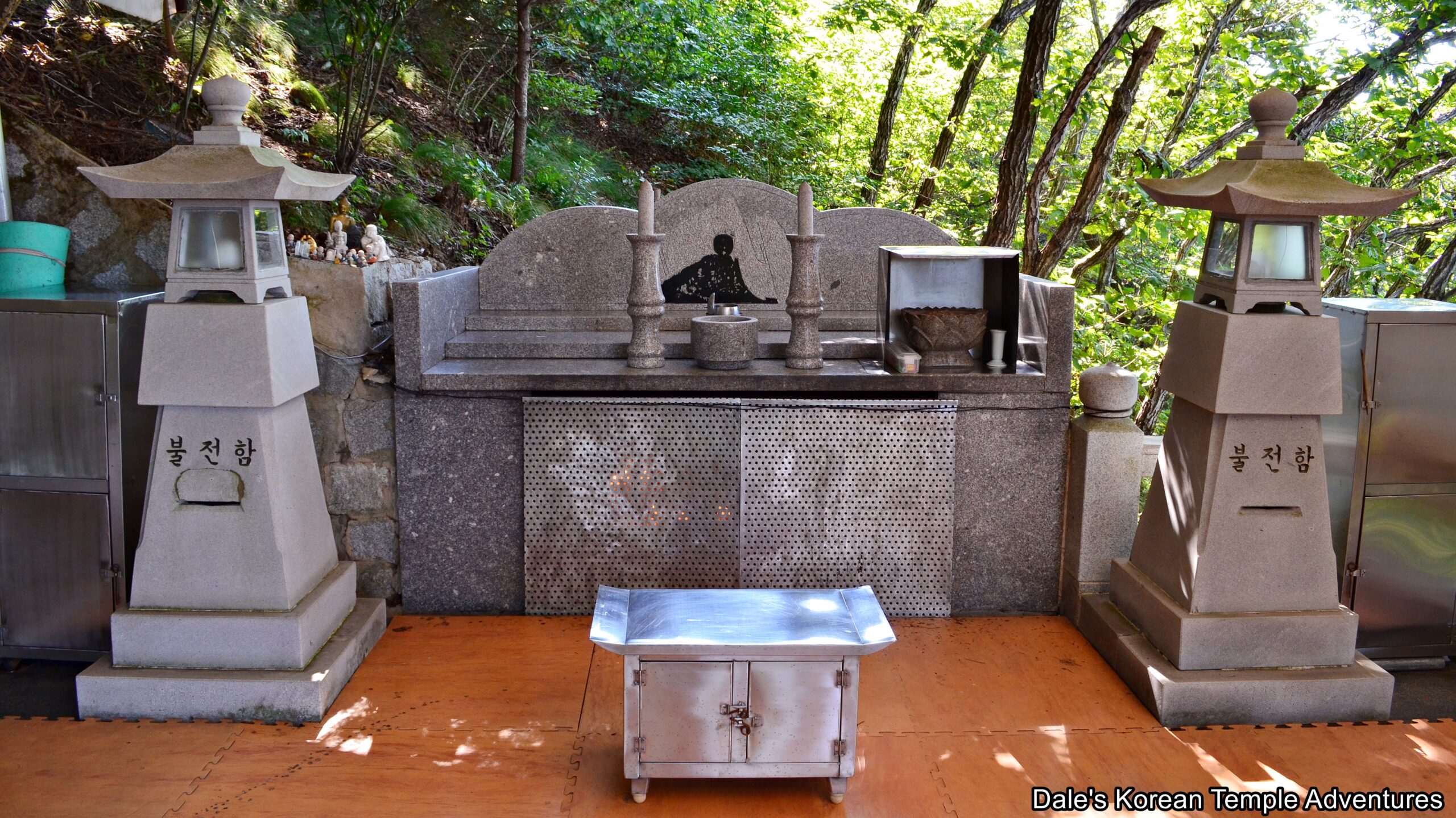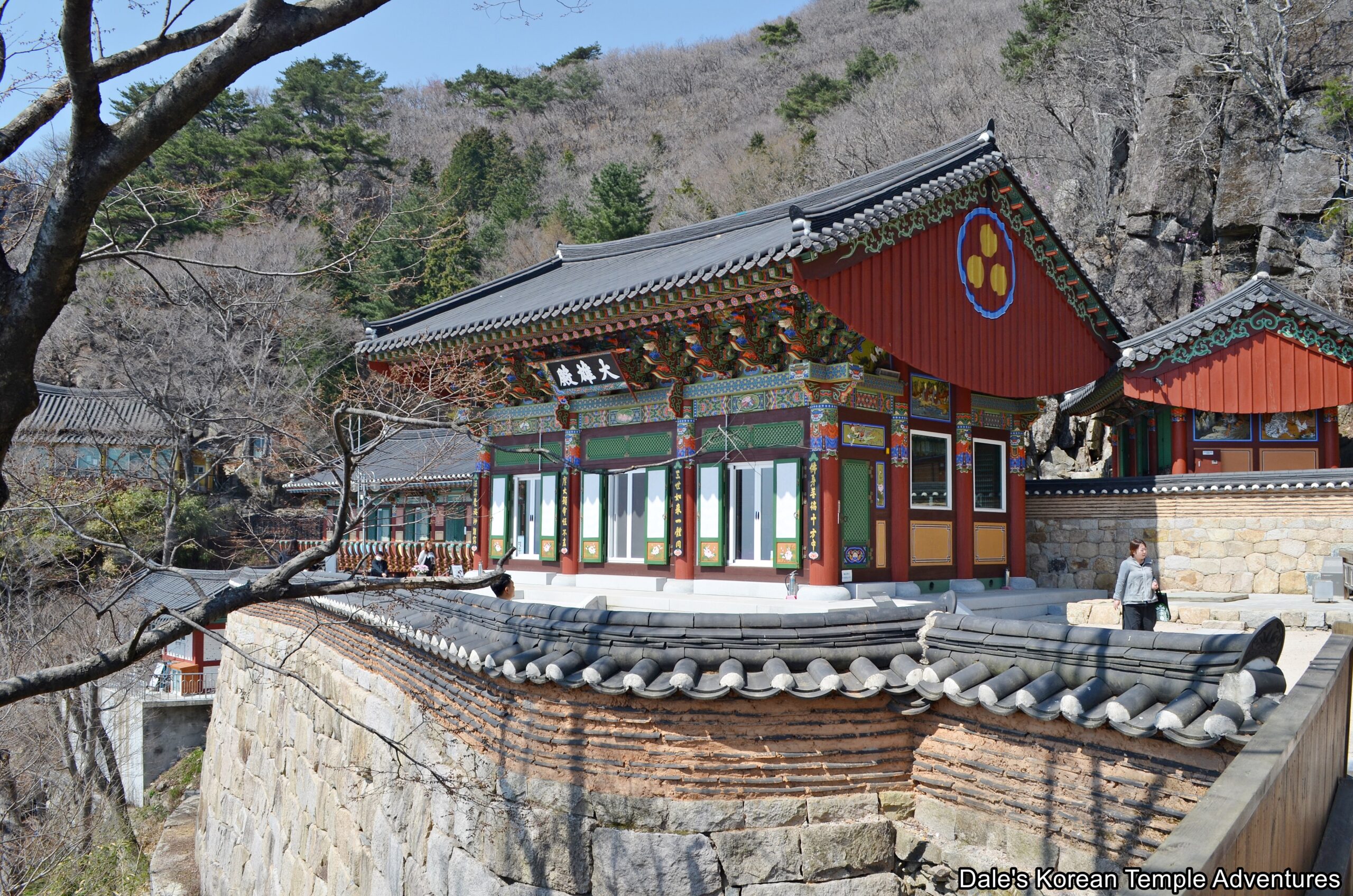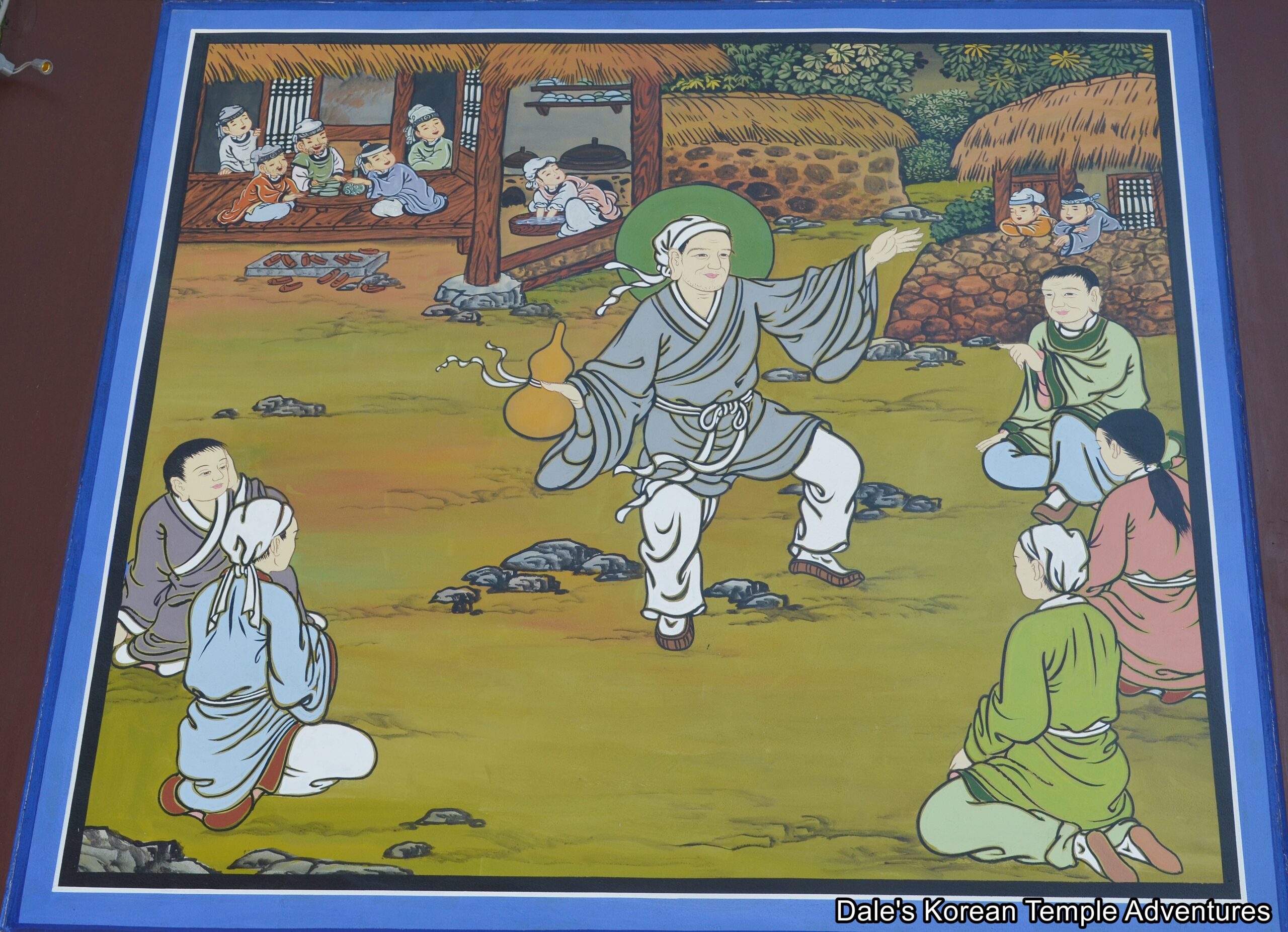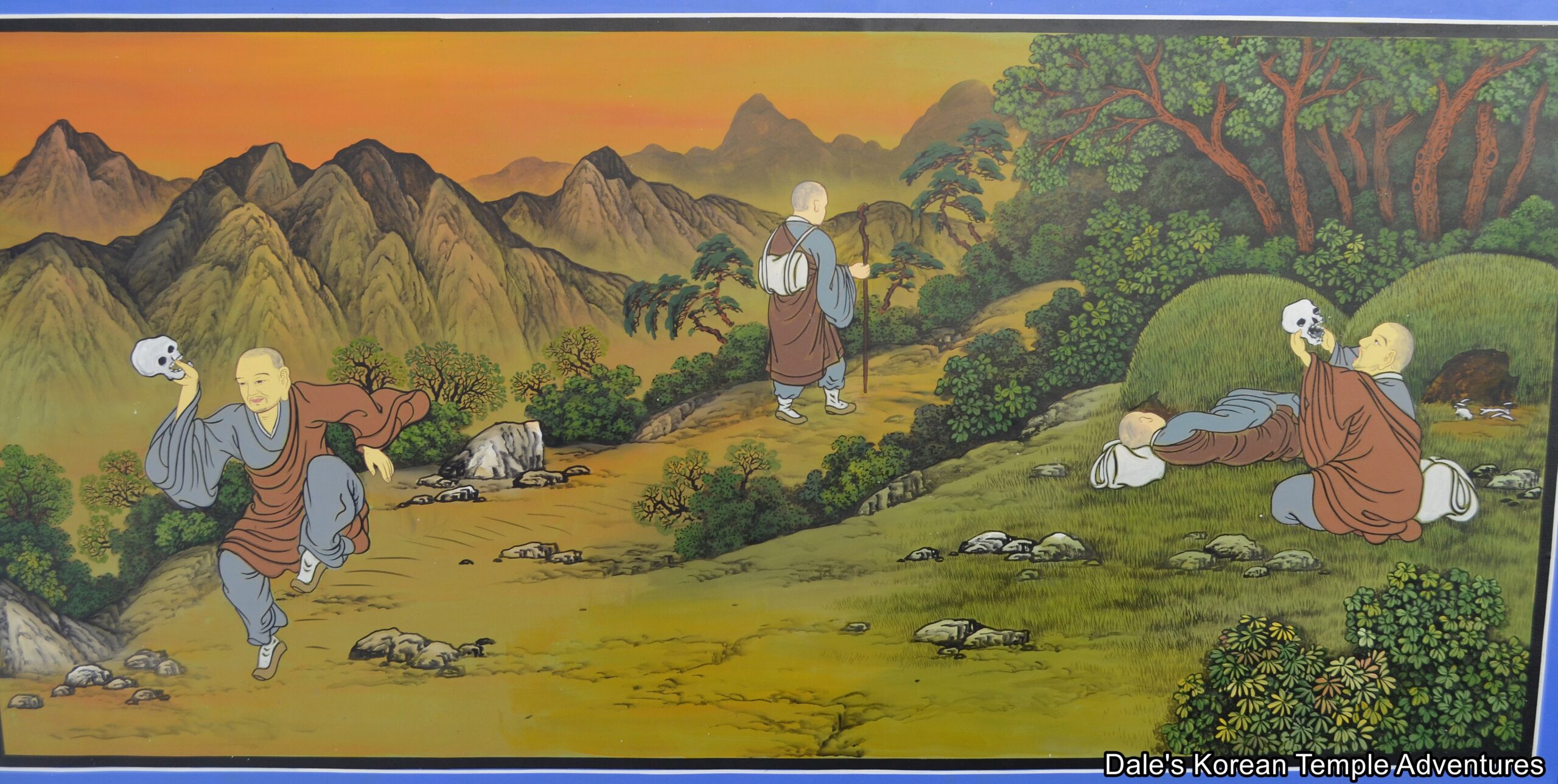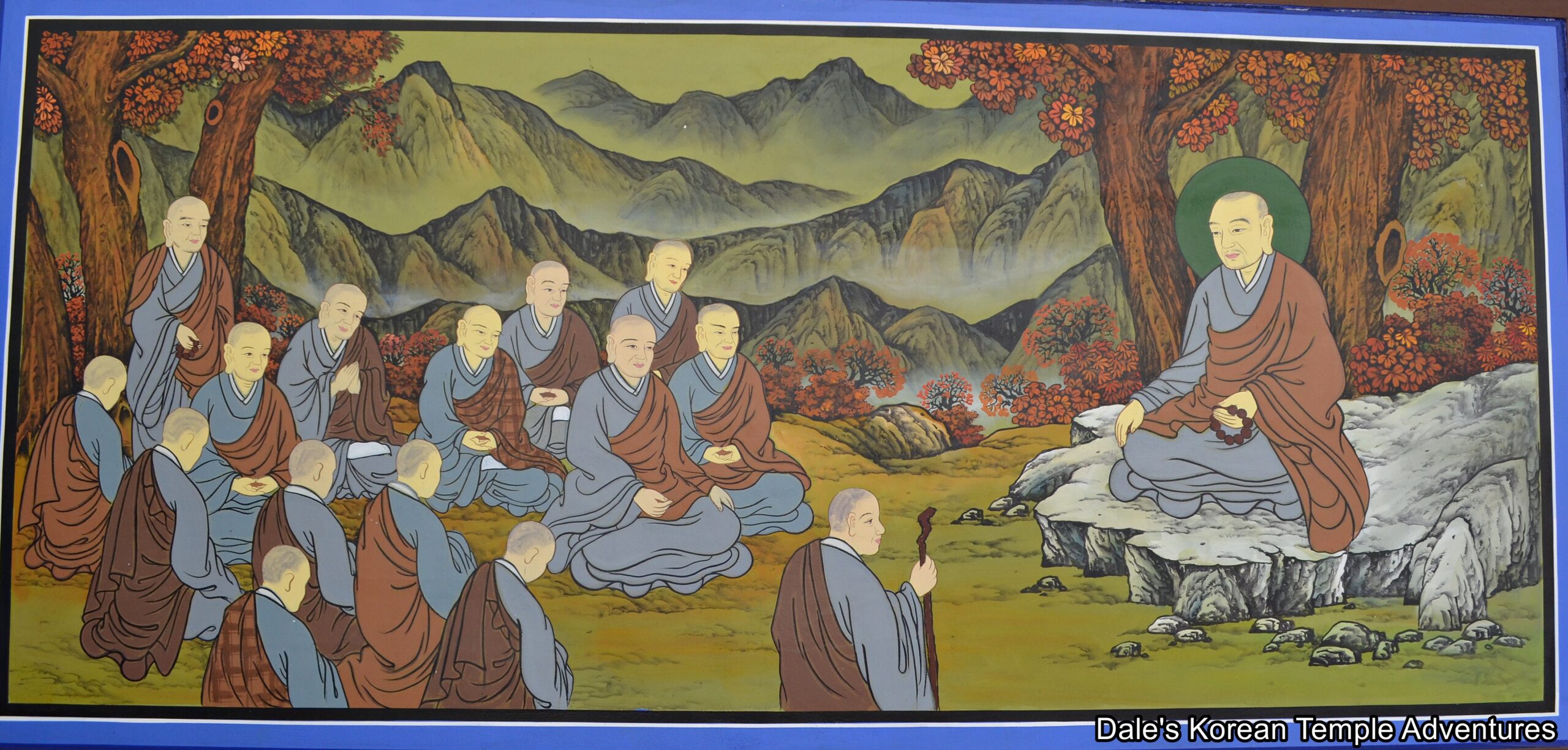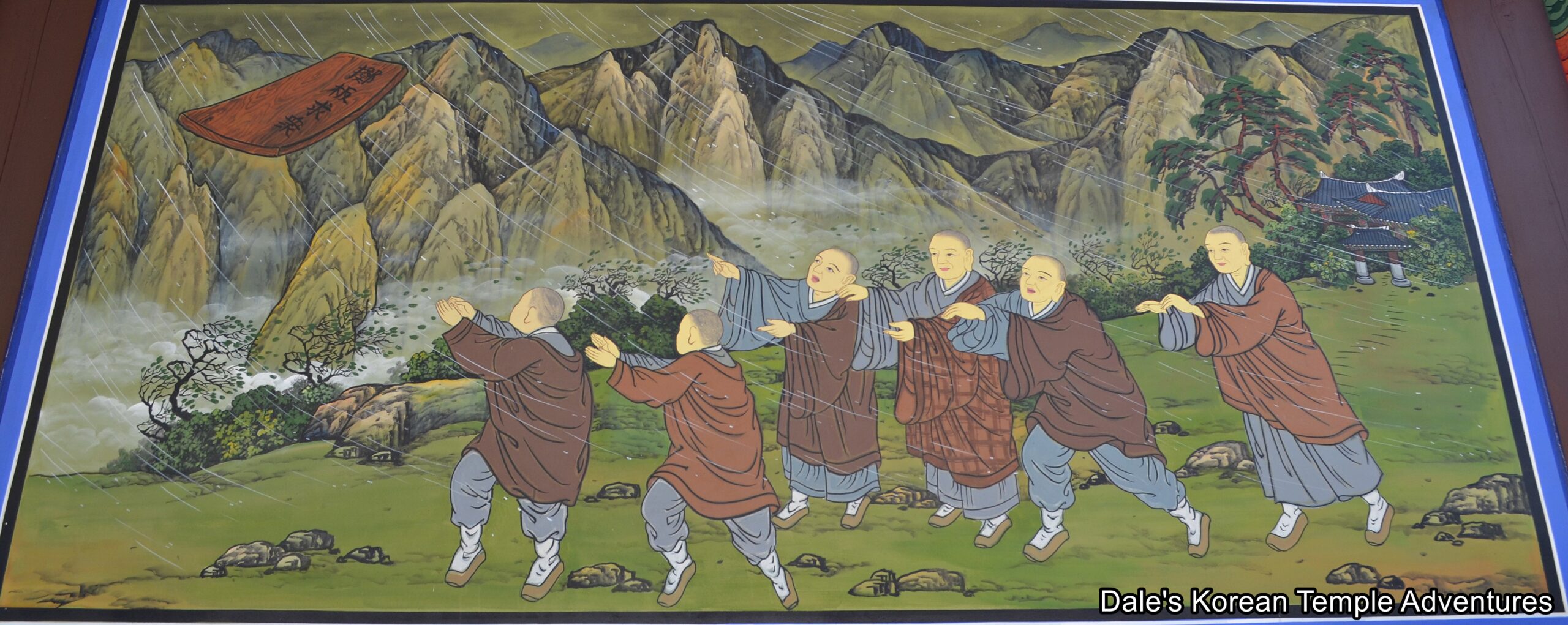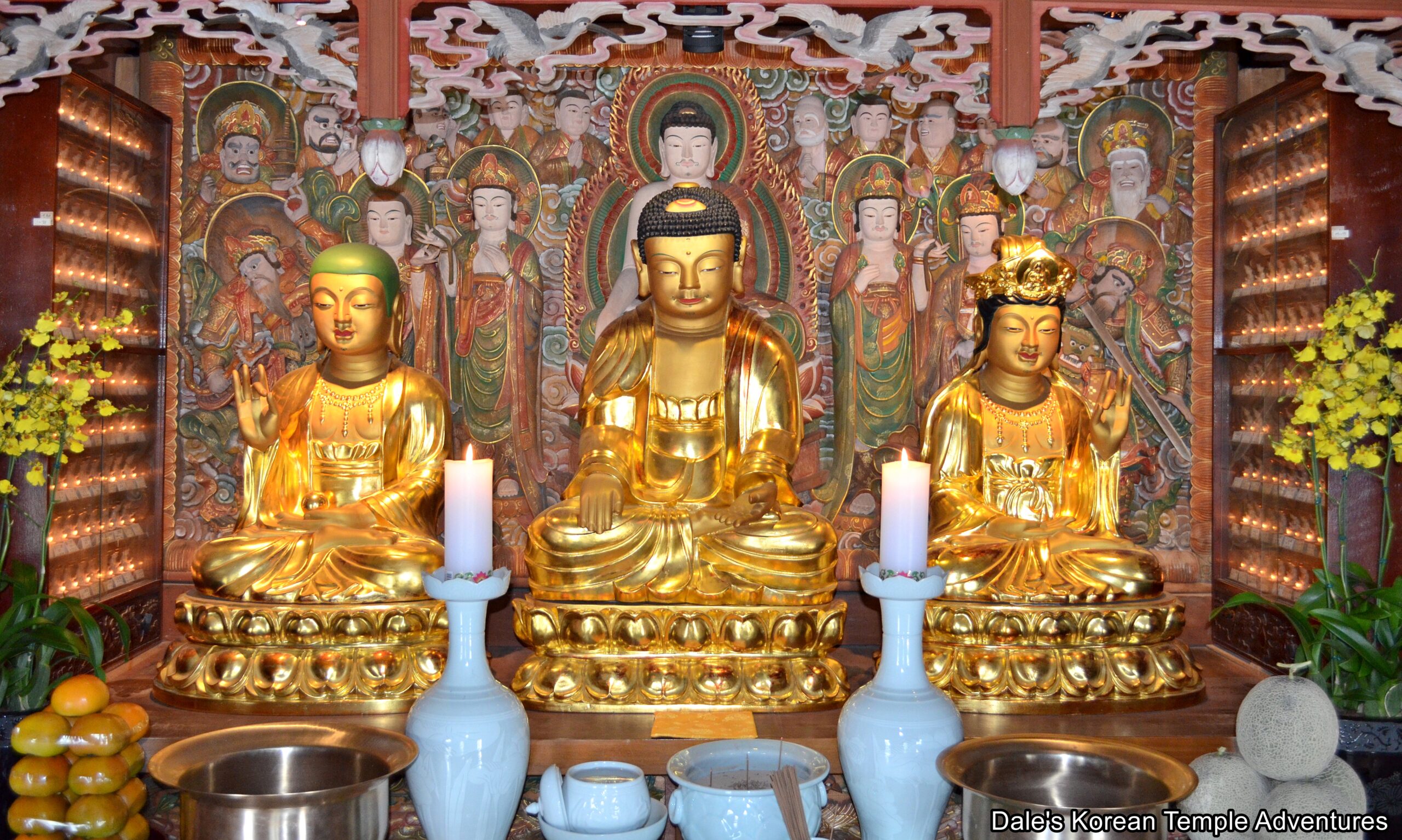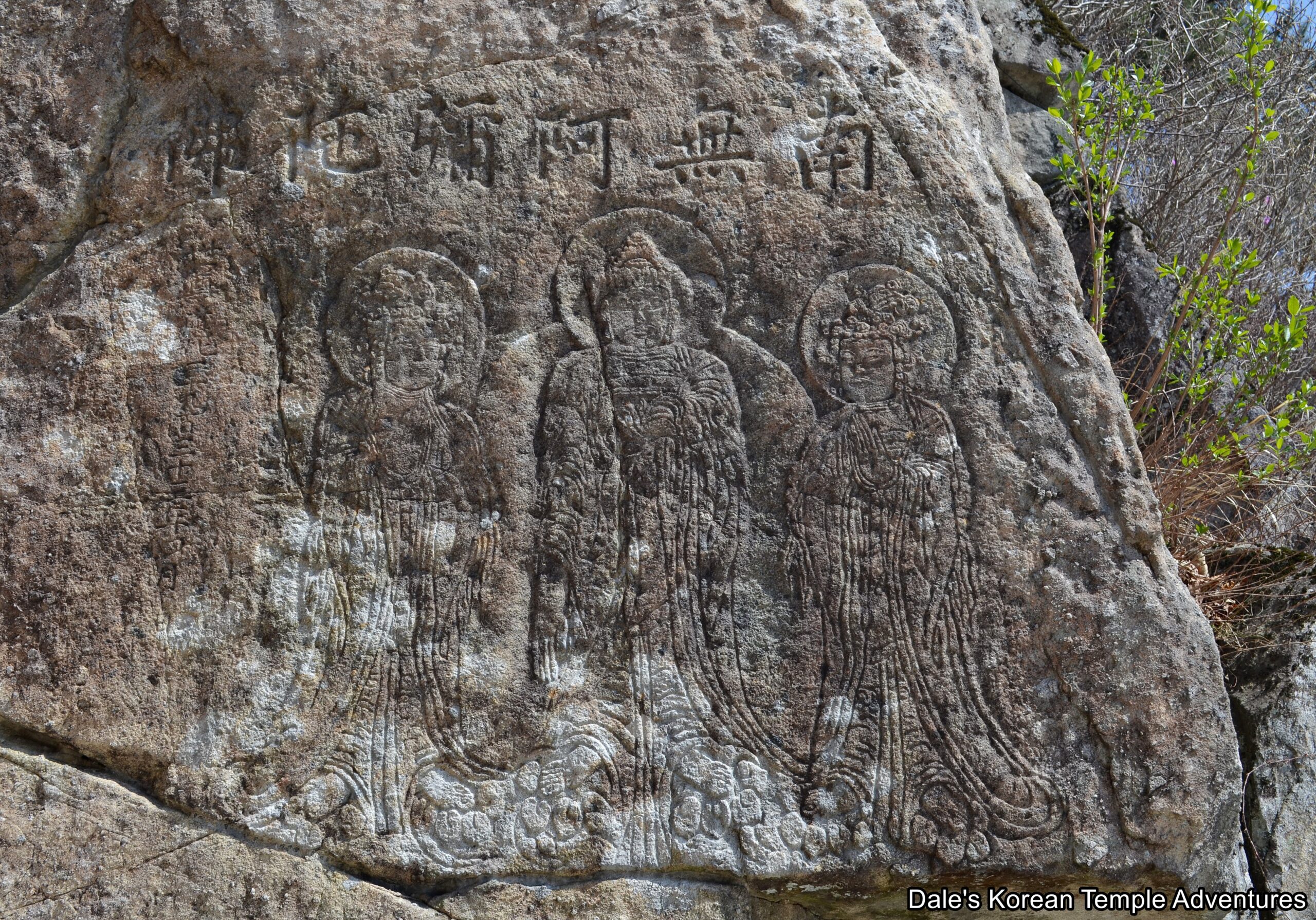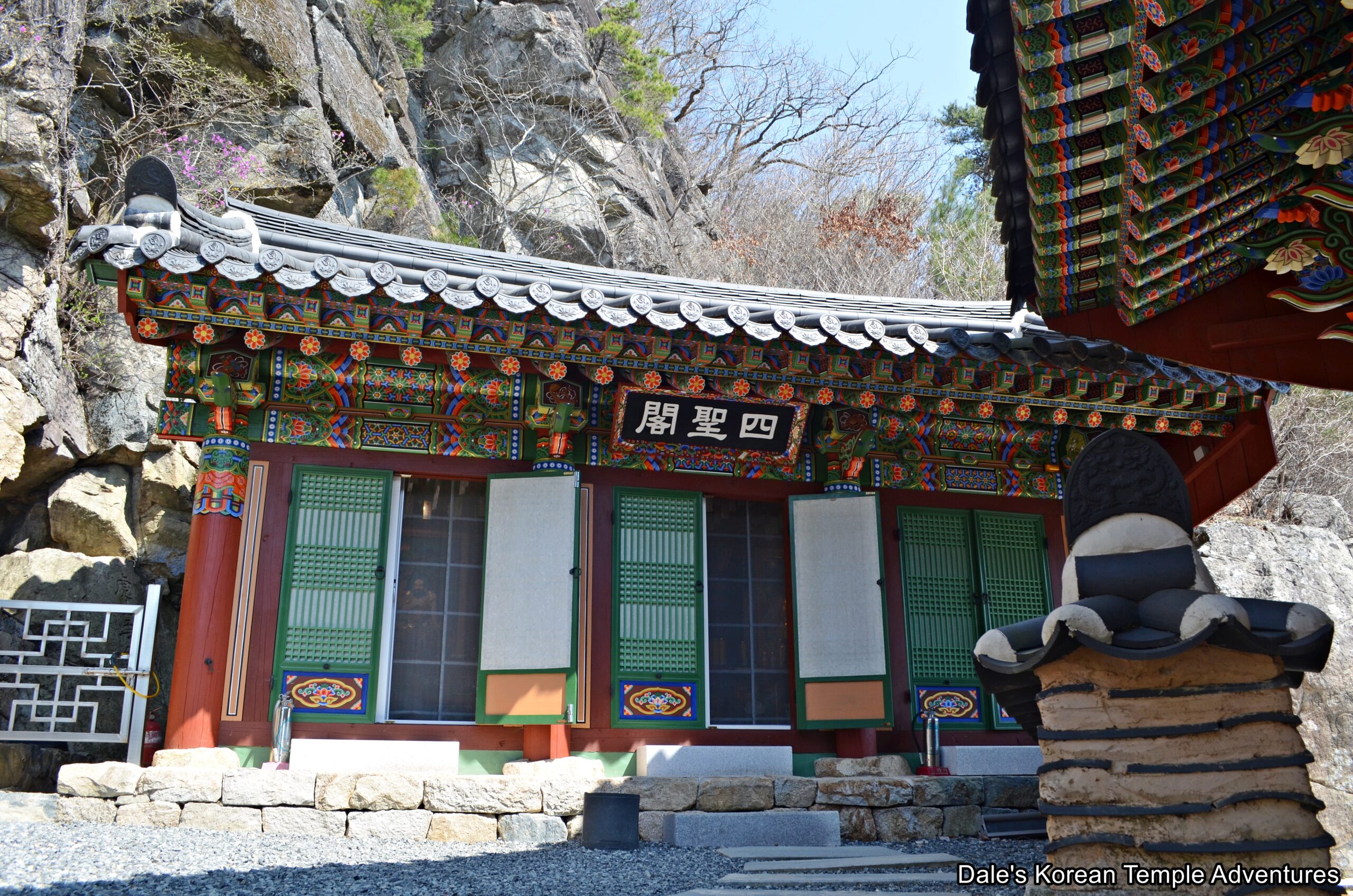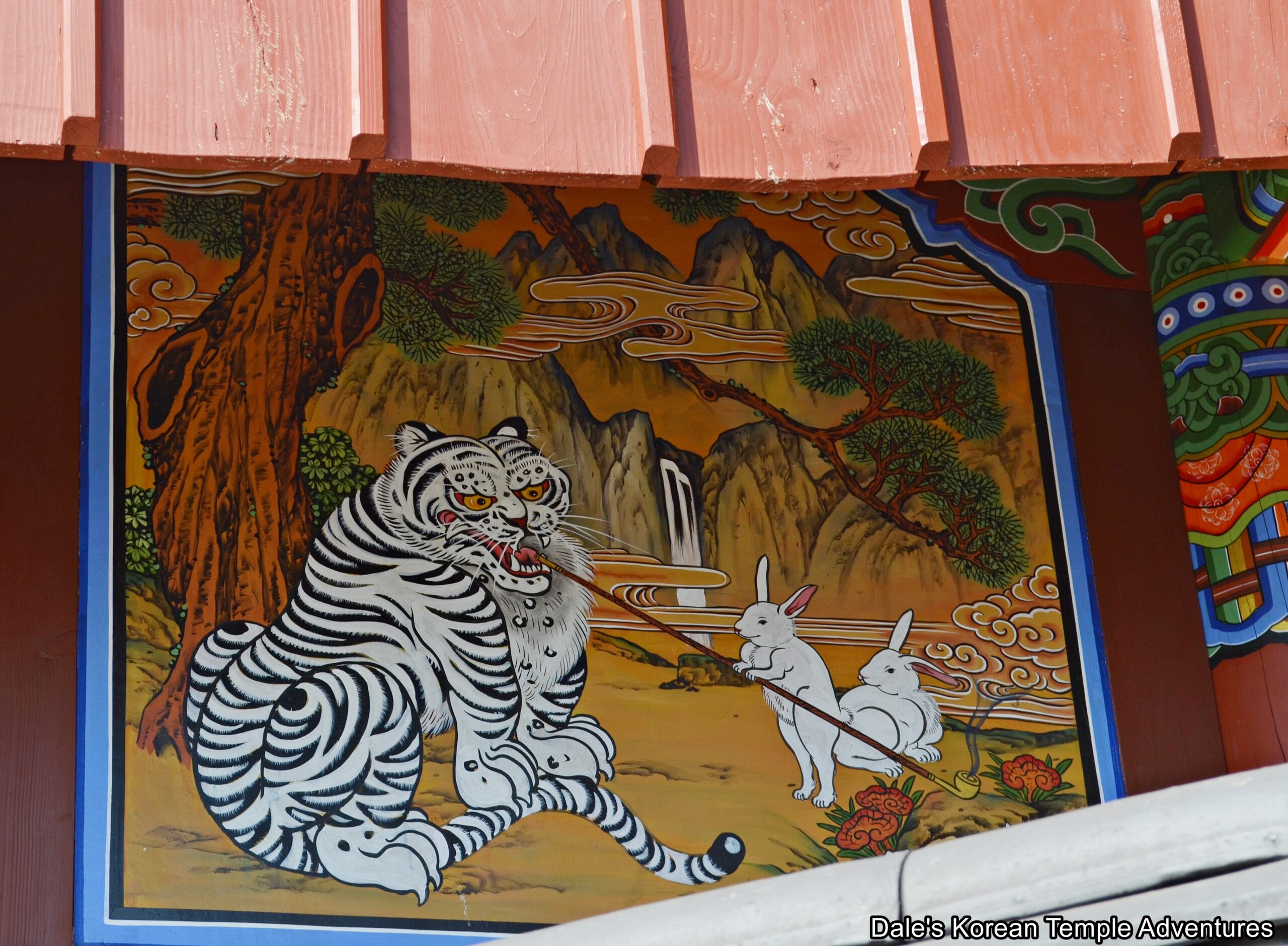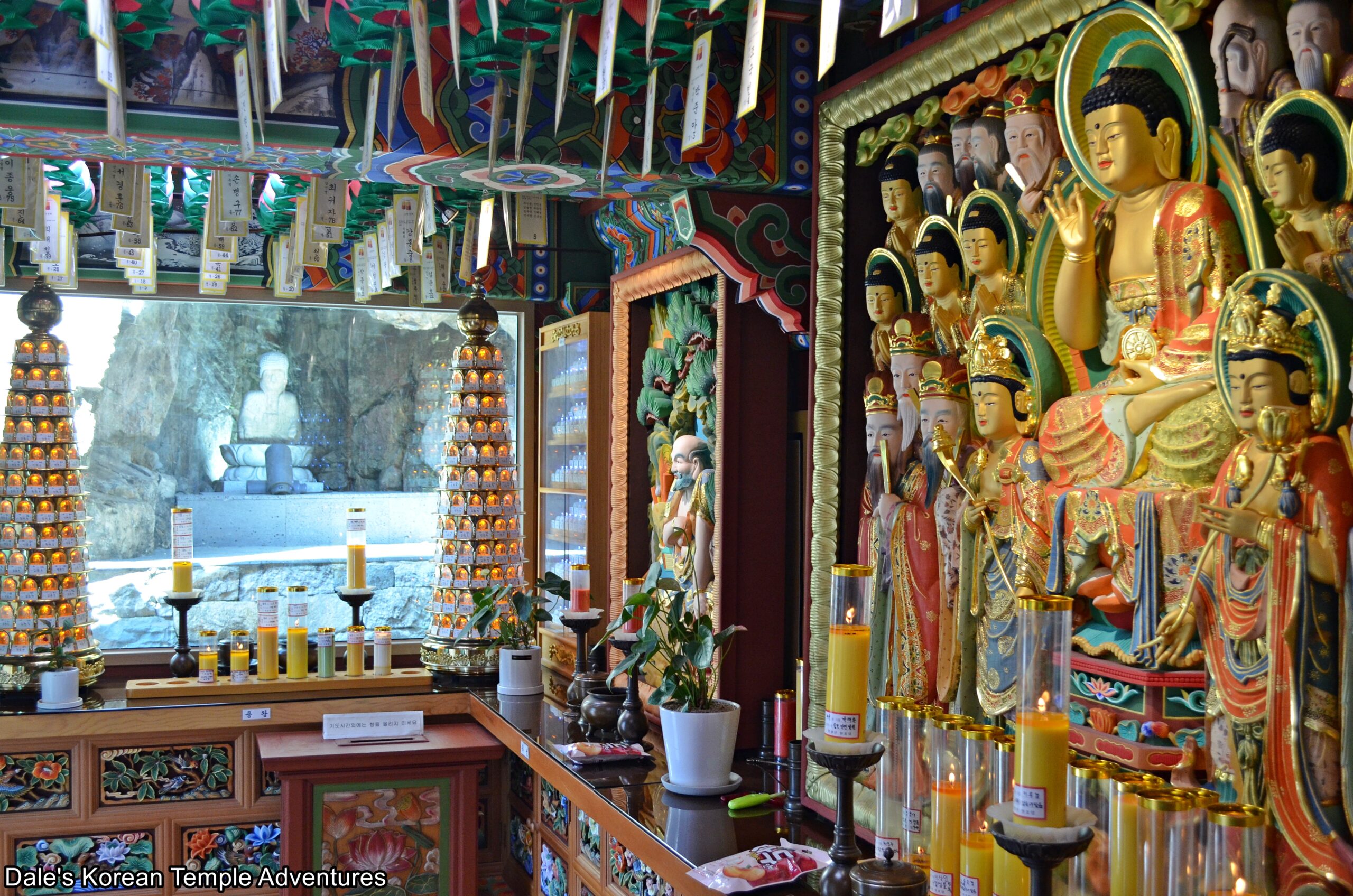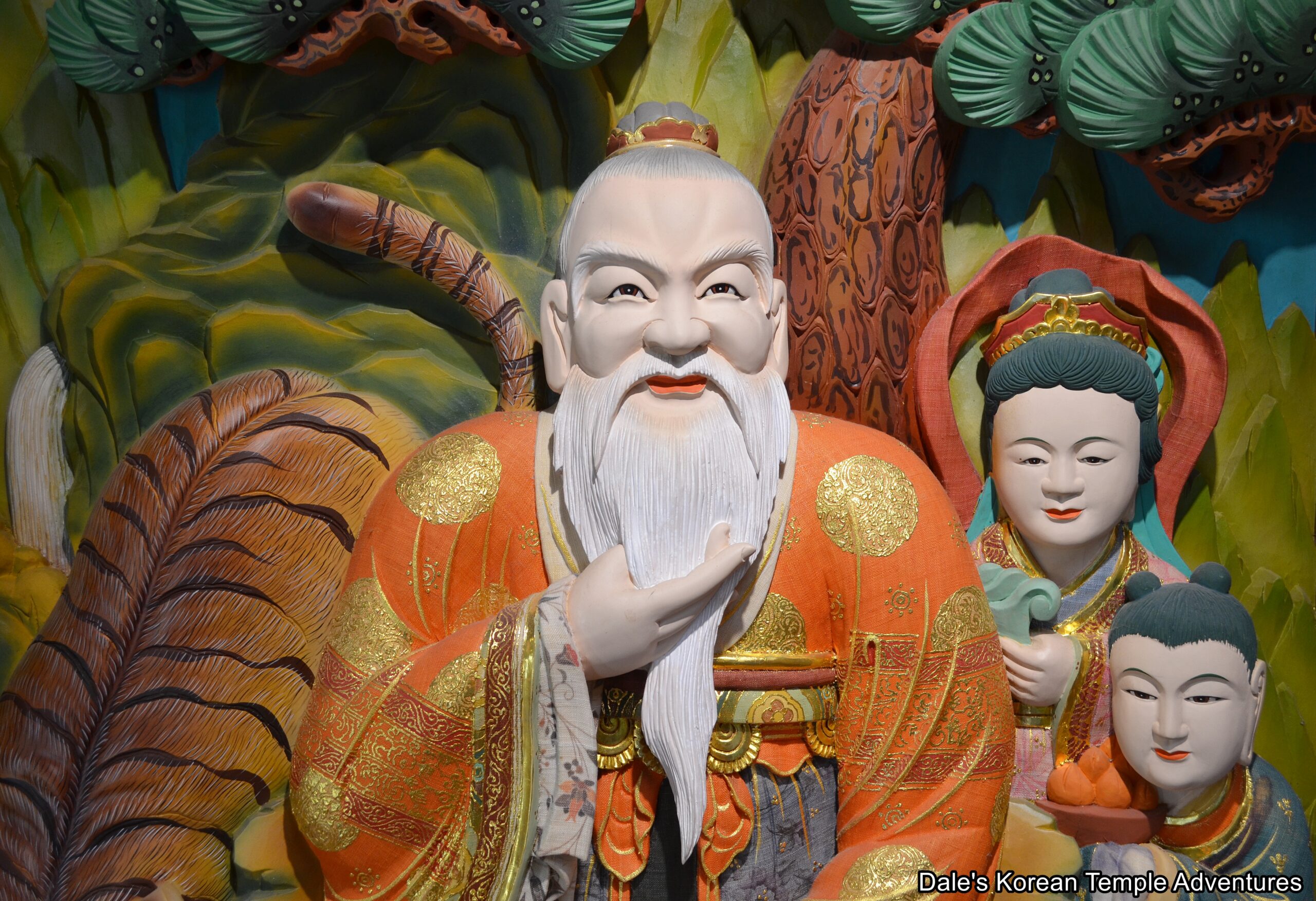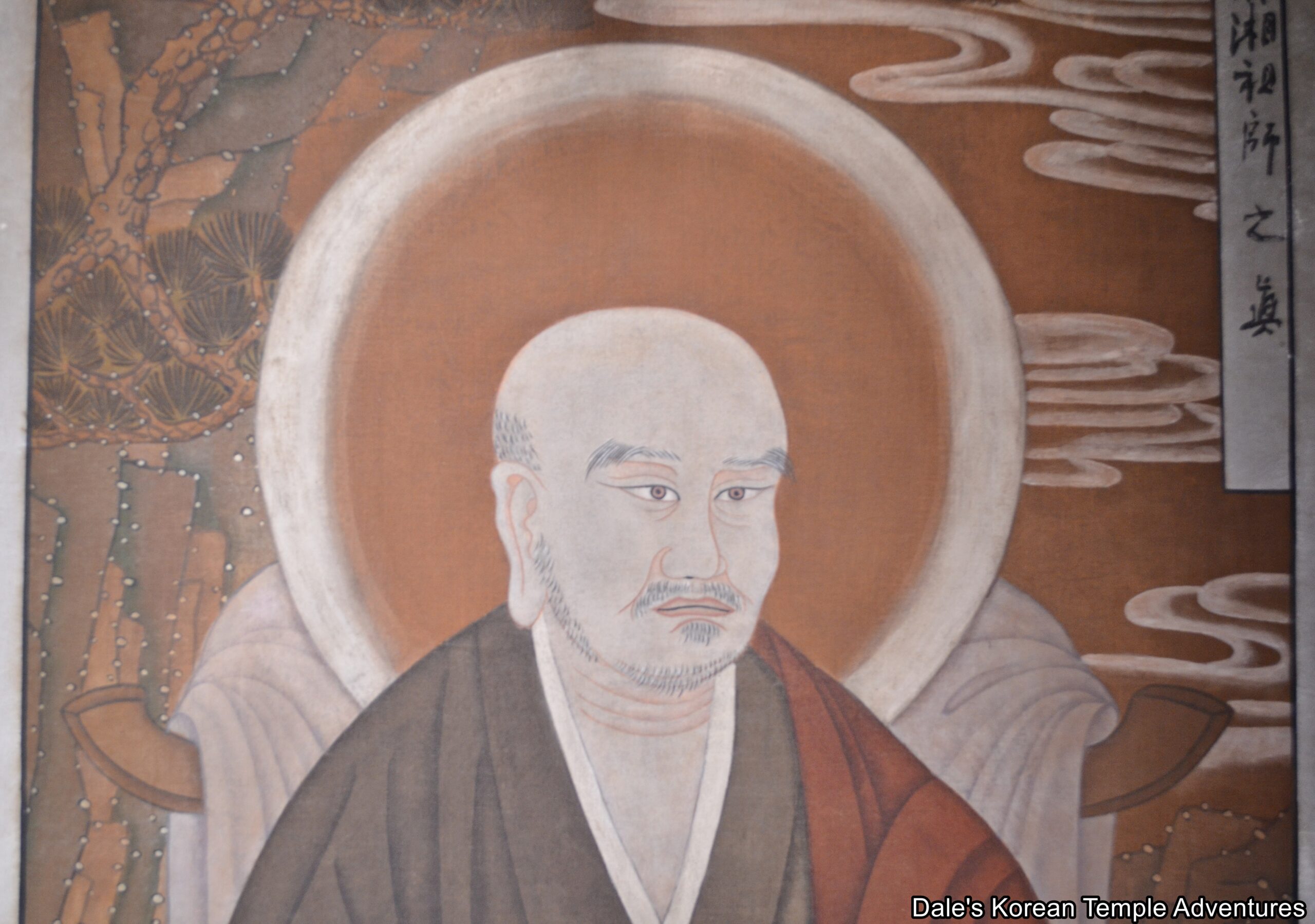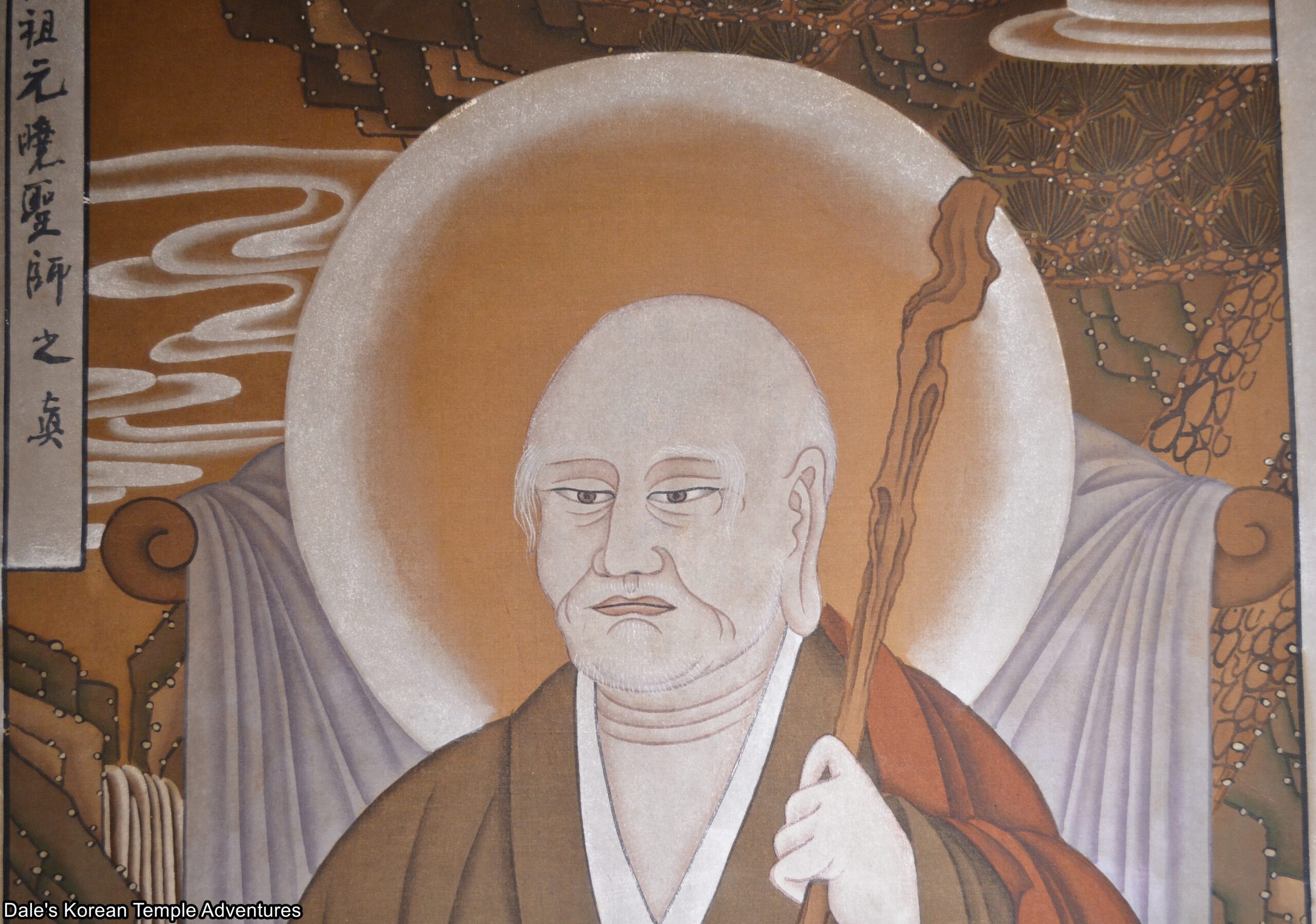Wonhyoam Hermitage – 원효암 (Yangsan, Gyeongsangnam-do)
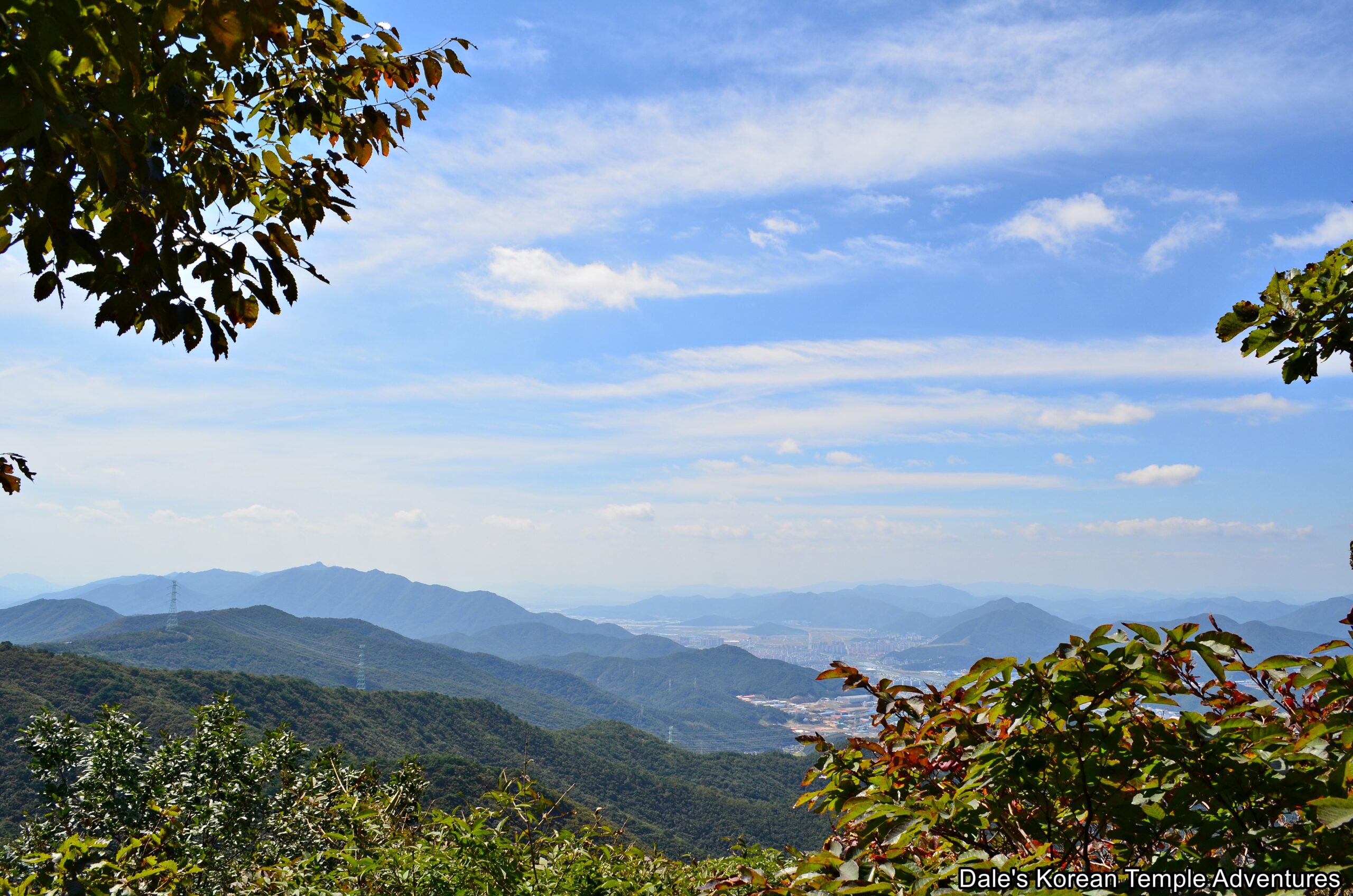
Hermitage History
Wonhyoam Hermitage, which is one among eight hermitages with the same name in Korea, is located in Yangsan, Gyeongsangnam-do on the western slopes of Mt. Cheonseongsan (920.1 m), which means “A Thousand Saints Mountain” in English. In fact, the hermitage is situated at 900 metres above sea level. The hermitage is named after the famed monk Wonhyo-daesa (617-686 A.D.), who lived and taught in the area. It’s said that Wonhyo-daesa first established Wonhyoam Hermitage in 646 A.D., which is also the very same year that neighbouring Tongdosa Temple was first established, as well.
As to how Wonhyo-daesa first came to the region, there’s a rather interesting legend. According to a legend written in the “Songgoseungjeon” (僧傳 宋), there were 1,000 Chinese monks worshiping at Taehwasa Temple in Tang China (618–690, 705–907 A.D.). They were in danger of being buried at the temple because of torrential rain and the potential for a landslide. Upon realizing this, Wonhyo-daesa threw a wooden board up into the air. The monks saw this strange board in midair and thought that it was rather mysterious. As a result, they all ran out of the shrine hall. After they had all exited the temple, a landslide destroyed the shrine hall. However, because of the wooden signboard, which read “Throwing the board, Wonhyo saves the people,” Wonhyo-daesa did in fact save the one thousand monks at the temple. Because of this, the one thousand monks sought Wonhyo-daesa. These one thousand monks would eventually become Wonhyo-daesa’s one thousand disciples.
After arriving on the Korean Peninsula, Wonhyo-daesa went in search of a place to stay with his 1,000 disciples. Eventually, they would arrive at Mt. Cheonseongsan. Here, they were greeted by Sanshin (The Mountain Spirit), who guided them to the general area of where Naewonsa Temple was eventually built. After guiding Wonhyo-daesa and his disciples, the Mountain Spirit quickly disappeared. In addition to Naewonsa Temple and Wonhyoam Hermitage, there were a total of some 89 temples or hermitages built in the area; however, most of these 89 temples were lost during the late Joseon Dynasty (1392-1910) caused by flooding. And now, only a few them remain including Wonhyoam Hermitage.
Eventually Wonhyoam Hermitage would fall into disrepair and be rebuilt by the monk Hyo-eun in 1905. In 1976, the Jong-ru Pavilion was built. And during the 2010s, the hermitage underwent a large scale rebuild with the construction of the Daeung-jeon Hall and a Samseong-gak Hall.
Interestingly, the hermitage has a rather fascinating modern story attached to it, as well. In the summer of 1991, a thunderstorm without rain erupted around the hermitage for two hours. A fireball from this storm struck Saja-bong (Lion Peak), which is located east of Wonhyoam Hermitage. As a result of this lightning strike, a blackened figure was discovered on the rocks by hikers the next day. The image that was formed by the strike looked similar to the image of a Buddha, Yaksayeorae-bul. Later, the abbot of Tongdosa Temple, Wolha, saw the image and named it “Cheonwang Yaksayeorae,” which means “Heavenly Light Buddha of Medicine.” It was named this because Yaksayeorae-bul resides in the Eastern Paradise, which is where the lightning struck near Wonhyoam Hermitage.
Wonhyoam Hermitage is home to two provincial treasures. The first is the “Yangsan Wonhyoam Hermitage Amita-bul Triad Relief,” which is Gyeongsangnam-do Tangible Cultural Property #431. And the other is “Seated Stone Statue of Yaksayeorae-bul and Concealed Objects,” which is Gyeongsangnam-do Tangible Cultural Property #430. Additionally, Wonhyoam Hermitage is traditional temple #76.
Hermitage Layout
You’ll first approach Wonhyoam Hermitage up a very long mountain road that’s nearly eight kilometres in length. Along the way, you’ll get some breathtaking views along the way. The road is especially beautiful in the spring when the azaleas are in bloom and during the fall when the trees are changing into their autumnal hues. Eventually, you’ll come to a parking lot for hikers. Mt. Cheonseongsan is a very popular mountain for hikers. But it’s beyond this parking lot, and to the north, that you’ll find a gravel road that leads up to Wonhyoam Hermitage.
The first thing to capture your attention along the way is the elevated Jong-ru Pavilion. The exterior of the bell pavilion is adorned with vibrant dancheong colours and images of a yellow and blue dragon. And housed inside the Jong-ru Pavilion is a large Brahma Bell. It’s also in this area behind the Jong-ru Pavilion, that you’ll see a sign leading up to a shrine in the forested mountain area. In total, there are 108 stairs that lead up to the shrine that houses the “Cheonwang Yaksayeorae.”
Back at the bell pavilion and nearing a bend in the gravel road, you’ll find the newly built Daeung-jeon Hall at Wonhyoam Hermitage. But before entering the Daeung-jeon Hall, you might have noticed a little rock outcropping that’s off-limits to the general public. This is purportedly where Wonhyo-daesa used to meditate. And it’s not surprising considering the amazing view of the city of Yangsan below that you get to enjoy from this vantage point. In fact, out in front of the Daeung-jeon Hall, there’s a look-out that you can safely look down upon the city of Yangsan.
Surrounding the Daeung-jeon Hall are a collection of larger sized modern statues. And surrounding the exterior walls of the recently built Daeung-jeon Hall, you’ll find a wonderful collection of paintings dedicated to Wonhyo-daesa and his life. The exterior walls are also adorned with various flower murals like lotus flowers and peonies, as well as Bicheon (Flying Heavenly Deities), and Gwimyeon (Monster Masks).
Stepping inside the Daeung-jeon Hall, you’ll find the “Seated Stone Statue of Yaksayeorae-bul and Concealed Objects” resting on the main altar in the centre of a triad. The statue is a 77 cm tall stone statue of Yaksayeorae-bul. According to the dedication on the statue, it was originally enshrined in the Yaksa-jeon Hall at Tongdosa Temple and later moved to Wonhyoam Hermitage. This statue bows its head slightly forward and hunches it back somewhat. The palm of its right hand is down in the “Touching the Earth Mudra.” The left hand is naturally proportioned, but the thumb of the right hand is shorter and the side is a bit thicker. The head is rather small compared to its body. The folds of the monastic robe hangs over its two knees, which are in a lotus position. The robe is rather thick, which is one of the characteristics of Buddhist statues from the latter half of the Joseon Dynasty (1392-1910). It’s believed that the statue dates back to 1648 based upon the writing found on the statue. The objects found inside the statue include a dedication document, a sutra, a case that contained five grains, five incenses, and five color strands of material.
Joining this central image on either side are statues dedicated to Jijang-bosal (The Bodhisattva of the Afterlife) and Gwanseeum-bosal (The Bodhisattva of Compassion). Rounding out the interior is a stunning wooden relief of a Shinjung Taenghwa (Guardian Mural) with a multi-armed Dongjin-bosal (The Bodhisattva that Protects the Buddha’s Teachings).
To the right of the Daeung-jeon Hall is an outdoor shrine that looks like it’s nothing more than a platform and a large boulder. However, etched on this large stone is the “Yangsan Wonhyoam Hermitage Amita-bul Triad Relief.” This triad has Amita-bul (The Buddha of the Western Paradise) at the centre of the triad and joined by Gwanseeum-bosal (The Bodhisattva of Compassion) and Daesaeji-bosal (The Bodhisattva of Wisdom and Power for Amita-bul). This triad is in low relief. The lower half of the Amita-bul image looks much longer than the upper half to give an overall impression of stability. The flanking Bodhisattvas make a mudra that symbolizes adoration towards the central Buddha. Each of the images has a circular nimbus. The two Bodhisattvas give the triad an overall symmetry. Above the triad you’ll find an inscription which reads “Namu Amita-bul.” According to an inscription to the right of Daesaeji-bosal, it states “Sejon Eunghwa 2933” (of the Buddhist calendar, which makes it 1906 of the Gregorian calendar).
To the left of the Daeung-jeon Hall, on the other hand, is the hermitage’s kitchen, monks’ dorms, abbot’s quarters, and administrative offices. It’s behind the main hall that you’ll find the final shrine hall at Wonhyoam Hermitage. Up a set of stairs, and at a bit of an angle to fit the mountain’s curves, you’ll find the Samseong-gak Hall. The exterior walls of this shaman shrine hall are adorned with two stunning murals. The first is a ferocious tiger, while the other is dedicated to the smoking tiger mural. Stepping inside the Samseong-gak Hall, you’ll find vibrant high-relief wood altar pieces dedicated to Sanshin (The Mountain Spirit), Chilseong (The Seven Stars), and Dokseong (The Lonely Saint). In addition to these reliefs, you’ll find two murals dedicated to Uisang-daesa (625-702 A.D.) and Wonhyo-daesa. Also tucked away in a corner, and seen through a pane of glass, is a stone statue dedicated to Yongwang (The Dragon King).
How To Get There
Like a lot of smaller hermitages or temples, this hermitage is a bit of a chore to get to and find. You can take Bus #12 or Bus #12-1 headed towards Tongdosa Temple. You’ll need to get off at Daeseok Village. This area is around the more famous Hongryongsa Temple. The hermitage has a shuttle bus that ventures up the long mountain road. The shuttle bus can be found out in front of the Wonhyoam Hermitage shop. And this shuttle bus leaves four times a day at 9 a.m., 10 a.m., 11 a.m., and 1 p.m. Otherwise, it’s a long eight kilometres up to the hermitage.
Overall Rating: 6/10
Wonhyoam Hermitage has a stunning view of the city of Yangsan down below from the heights of Mt. Cheonseongsan. In addition to the views, you can also enjoy the two provincial treasures inside the newly built Daeung-jeon Hall and the 1906 low-relief of Amita-bul on the face of the mountain. The wood reliefs inside the Samseong-gak Hall are stunning as are the two tiger paintings that adorn the exterior walls of the shaman shrine hall. Wonhyoam Hermitage is a beautiful blend of nature and Buddhist artistry that should definitely be enjoyed.
